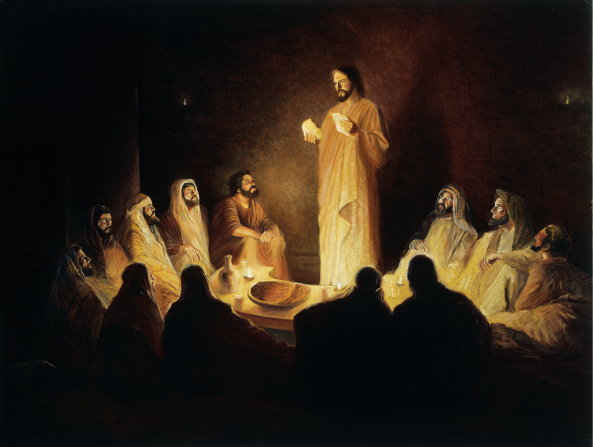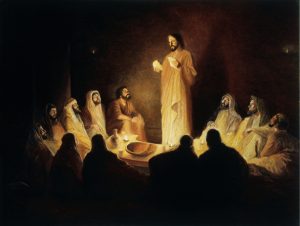Since it’s named after Moses’ brother, it should come as no surprise that the Aaronic priesthood is closely tied with Mosaic law. That law was meant to prepare humankind for the mortal ministry of Jesus Christ, who would then build upon and elevate it to a new level. To fulfill this purpose, the Mosaic law focused on using rituals and physical metaphors to explain the more abstract concepts that Christ would teach.
The Sacred Weekly Ritual
Although we are no longer living strictly under the law of Moses, it should be noted that the law was never removed so much as simply improved upon, and we must still rely on some rituals to access the power of God because of what they represent. The Aaronic priesthood—called the “lesser” priesthood because it pertains to the “lesser” law—specializes in rituals.
This includes the sacrament. It is not a saving ordinance in and of itself, but to say that it’s unnecessary would be like saying that a house isn’t necessary. That is, you can technically survive without a house, but the quality of life would be severely compromised. So it is with the sacrament. Only baptism conducted in a specific manner by the proper authority is necessary for salvation, but the sacrament allows us to renew our baptismal covenants on a regular basis, essentially providing infinite chances to perfect our discipleship.
Typically consisting of bread and water in modern times, the sacrament represents the broken body and spilled blood of the Son of God. Baptism emulates death and resurrection; the sacrament symbolizes the atoning death of Christ, which gives us new life. While Mosaic law accomplished this symbolism by requiring sacrifices of unblemished lambs, the sacrament now stands in for the lamb.
Bringing Us Nearer to God
The Aaronic priesthood, the authority to act in the name of God according to the Plan of Salvation, enables the sacrament to be administered. It gives us the power of symbolism to participate in ordinances that bring us closer to our Father and Brother by using our natural tendency to relate abstract ideas to things that can be experienced with our senses. Thanks to the Aaronic priesthood, the Atonement can go beyond being a nice idea; it can feel real.
About Ashley Morales
Frequently whimsical and overly optimistic about how much time it will take to do things, Ashley Morales is deeply passionate about the gospel and all kinds of creativity. Her hobbies include philosophically analyzing nearly every book, play, video game, and movie that she consumes, writing music and short stories, promising herself that she will finish writing her novels, going to sleep too late, eating foods she's never tried, putting off cleaning her house, browsing Zillow, spending as much quality time as possible with her wonderful husband, trying to be a good mother to her fantastic children, and never finding the balance between saying too much and too little. One day, she hopes to leave a positive mark on the world and visit every continent (except Antarctica) with her family.
Twitter •



 Watch a video about the restoration of the gospel on lds.org
Watch a video about the restoration of the gospel on lds.org